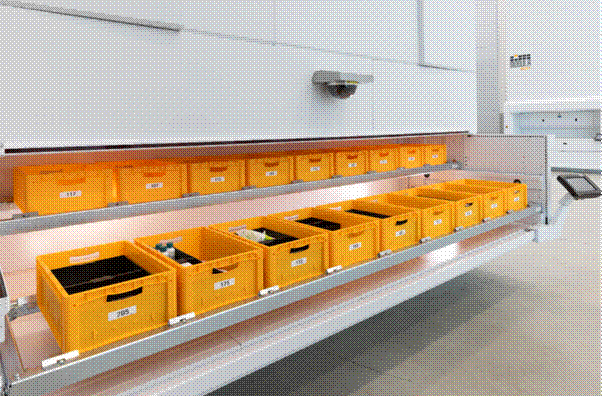If your e-commerce shipping feels stuck in that “not great, not terrible” zone, it could be your warehouse that’s the issue.
Most brands try to fix slow delivery by chasing new shipping partners, negotiating rates, or adding more cut-off times, and while those things matter, they’re all downstream of one critical question:
How quickly can you find the right item in the right quantity, and get it to the packing station without chaos?
Instead of people walking miles of aisles to find items, you can let compact, intelligent systems from providers like Modula US bring goods to the operator, orchestrated by software.

Fast Shipping Is a Baseline
One analysis of shipping time statistics found that over 40% of US consumers expect their online orders to arrive within two to three days.
Meanwhile, average parcel delivery speeds have already accelerated by roughly 40% in recent years, dropping from around 6.6 days in early 2020 to about 4.2 days by mid-2023, thanks to major investments in logistics and fulfillment networks.
That’s the environment your store is competing in. Customers compare you not just to your direct competitors, but to the delivery experience they get from Amazon, Walmart, and other big players.
If your internal warehouse processes still look like a 1990s stockroom, it becomes very hard to hit a 2–3-day promise consistently, especially as order volume grows.
Bottlenecks Inside the Four Warehouse Walls
When shipping feels slow, the instinct is to blame carriers or cross-border complexity. But in many e-commerce operations, the real slowdown happens before the parcel ever reaches a truck.
If you have unstructured storage, inventory is spread across floor locations and overflow spots, so even experienced pickers waste time hunting for SKUs. Plus, in a traditional layout, workers can walk 10–15 kilometers per shift, just moving between locations.
Batching chaos is another concern. As orders pile up, workers pick in whatever order seems easiest, rather than following an optimized path. Paper pick lists and manual counts when items seem out of stock all add precious minutes as well.
All of this is happening while e-commerce keeps expanding. According to estimates from the US Census Bureau, retail e-commerce sales reached about $304.2 billion in Q2 2025 alone, up from the previous quarter and continuing a long-term growth trend.
At the same time, a US Government Accountability Office (GAO) report notes that online sales have nearly doubled in recent years, with warehouse employment rising in parallel to keep up with demand. Throwing more people into an inefficient layout works for a while, but it’s expensive and can create safety issues and higher churn.
[Source: US Government Accountability Office]
To really speed up shipping, you have to redesign how items are stored, retrieved, and presented for packing.
Connecting Storage to a Wider Supply Chain Strategy
Smart automated storage is powerful on its own, but it becomes truly strategic when you align it with how you plan and manage your entire supply chain.
Global Gurus has written about how modern supply chain management increasingly relies on data, automation, and integrated systems rather than siloed manual processes. Linking your new storage capabilities to a broader supply chain strategy through forecasting, purchasing, and network design helps you:
- Decide which SKUs to forward-deploy in automated storage for maximum impact on shipping time.
- Align reorder points and safety stock with realistic picking and packing capacity, so you don’t promise speed you can’t deliver.
- Treat your warehouse as a strategic node in a faster, more responsive network.
Turning Your Warehouse into a Shipping Advantage
The end goal is an operation where shipping speed and reliability become a competitive advantage instead of a constant headache. We have explored before how on-time delivery performance ties directly to customer satisfaction and retention.
When your warehouse can consistently move orders from click to carrier in hours instead of days, it becomes much easier to hit your delivery promises and offer faster options without destroying your margins. Not to mention the amount of customer trust you build by matching the shipping experience to the expectations set on the product page.
Key Takeaways
The first step is to accept that customer expectations and competitive benchmarks have already shifted, so your internal processes need to evolve. From there, take a hard, honest look at your current fulfillment cycle and measure where time is truly lost.
Once you see the slow spots clearly, pilot smart storage where it will have the biggest impact. Your people should be focused on exception handling and keeping the operation flowing smoothly, not on walking miles of aisles every day.





